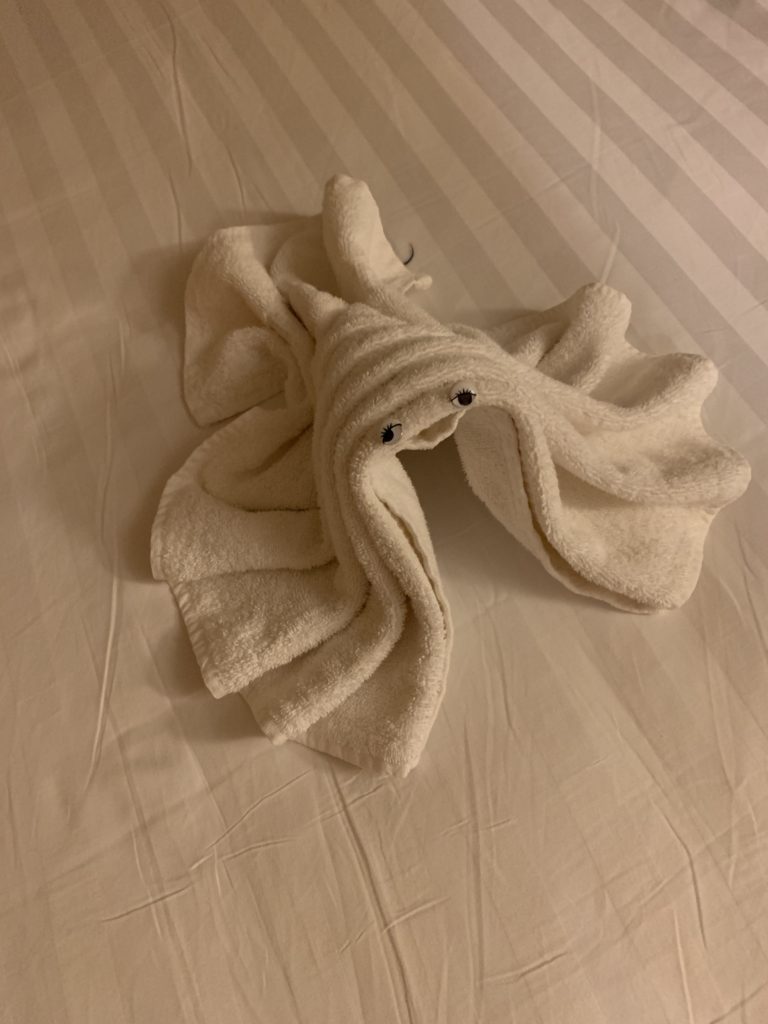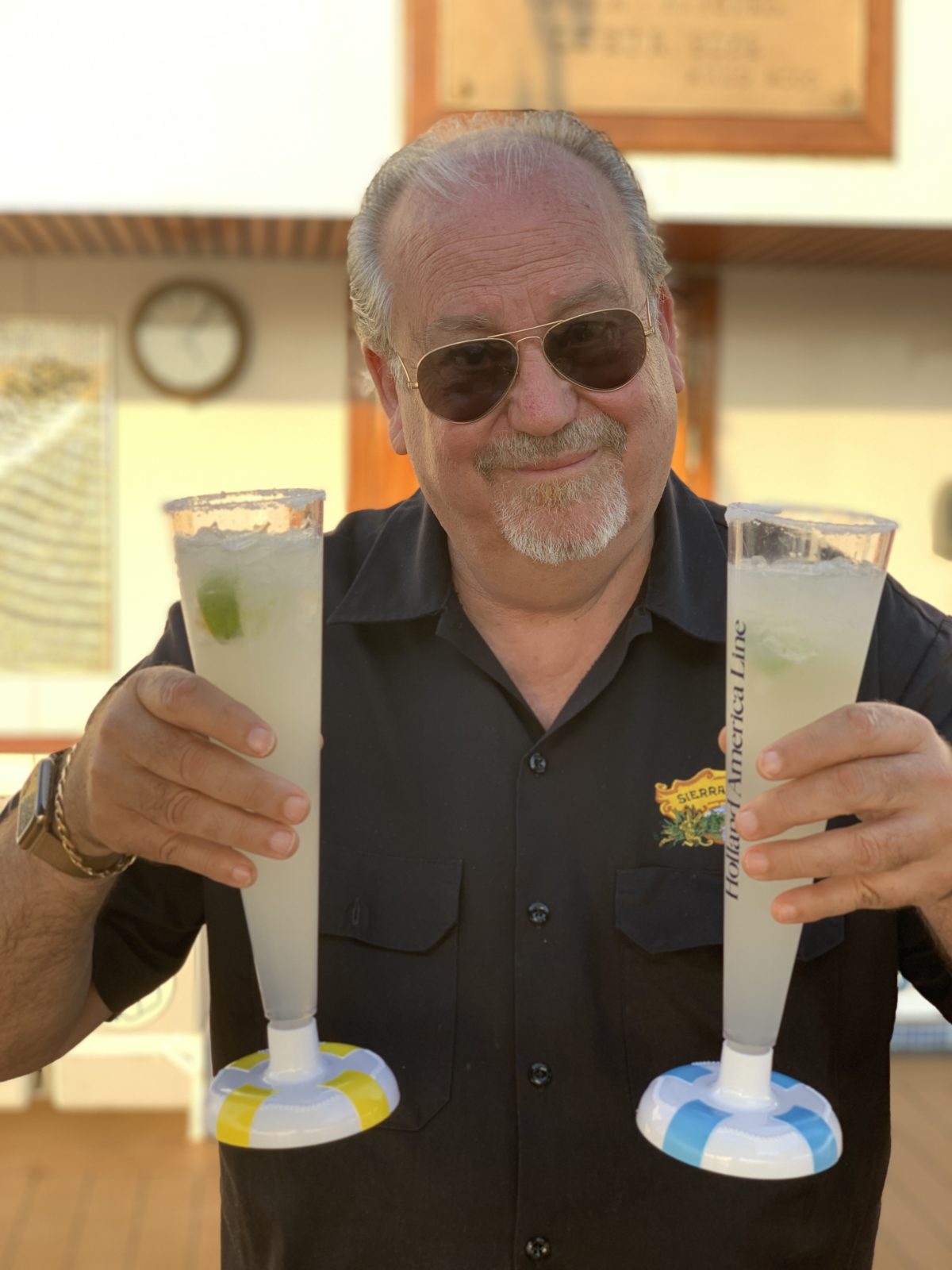Saturday, January 26, 2019
Preface
These musings that you find posted here are not just for your eyes, gentle reader. Another purpose of this river of words is very personal and selfish. At some time in the future I may want to relive my adventure, every little detail of it. Therefore, you may find in these posts some accounts that seem to be of very little public interest. I reserve my right to post such accounts as may fulfill my future desires.
Now on to the story
Taking a page from Anette Martin’s playbook, I was up at dawn today to enjoy watching the sun rise. Although this is not a normal activity for me, I have to say that I thoroughly enjoyed the experience. The sea was relatively calm as was the air. The hallways and dining areas were nearly empty which lent to the serenity of the hour. It also gave me some time to think about where I was and what I was doing there, sort of “being in the moment.”
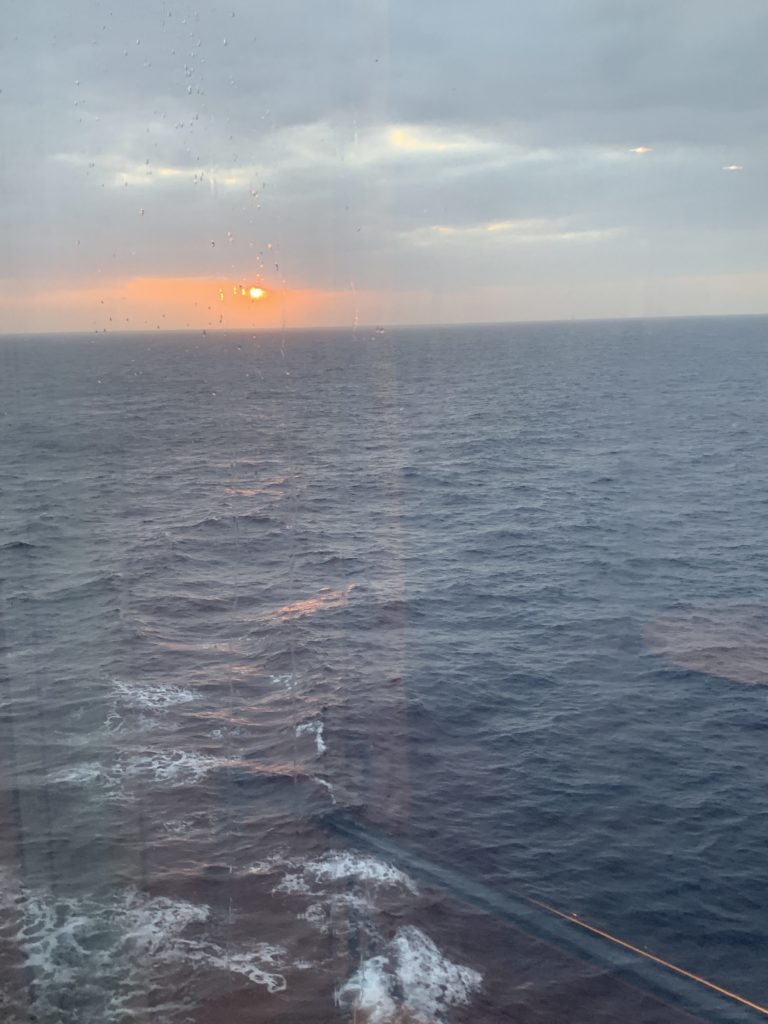
Around 11:00am we enter the area known as the San Blas islands. These islands lie just off the coast of Panamá and are inhabited by the Kuna people. These people have maintained and fiercely defended their culture and way of life for hundreds of years.
The San Blas islands are a small archipelago just off of the north of Panamá. There are about 365 of the islands but most are uninhabited. The islands that are inhabited are densely populated. The “buildings” are mostly thatched huts that are built very close together. Small sailing craft ply the waters between the islands like taxi cabs crisscrossing the downtown area of a major city.
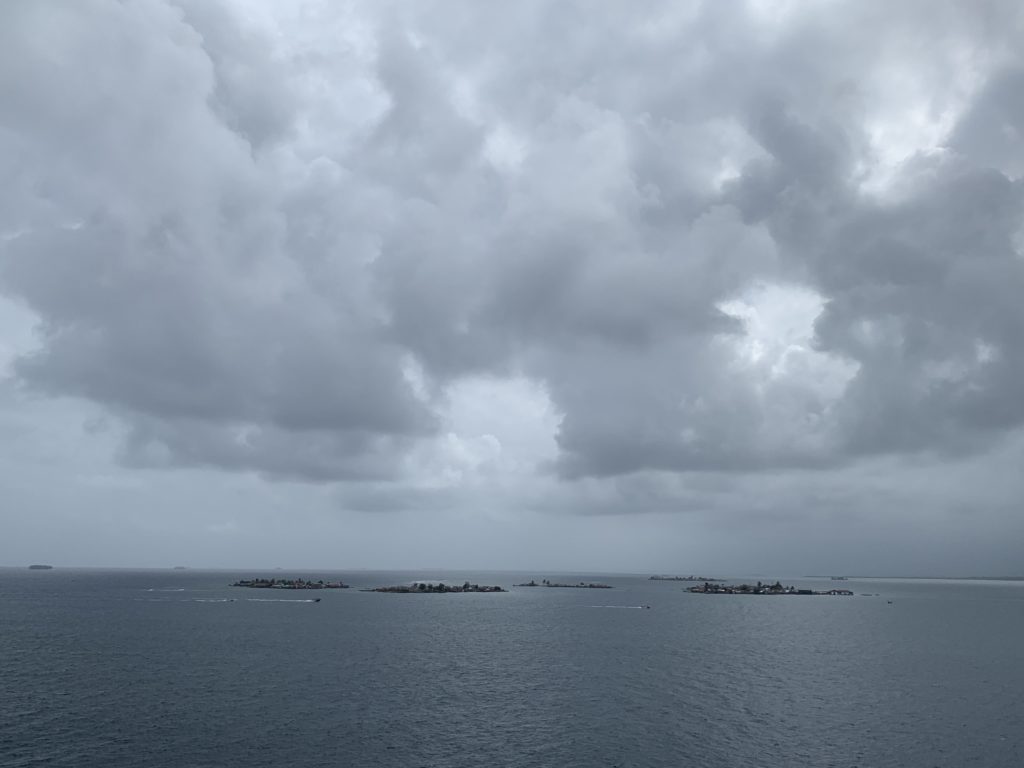
Because there are no harbors in the San Blas islands, we need to get ashore by way of “tenders.” Tenders are small boats that carry about 50 people and bob up and down in the ocean like a cork. Riding in a tender is not at all difficult, but you may die getting on and off of the tender itself when the seas are the least bit rough.
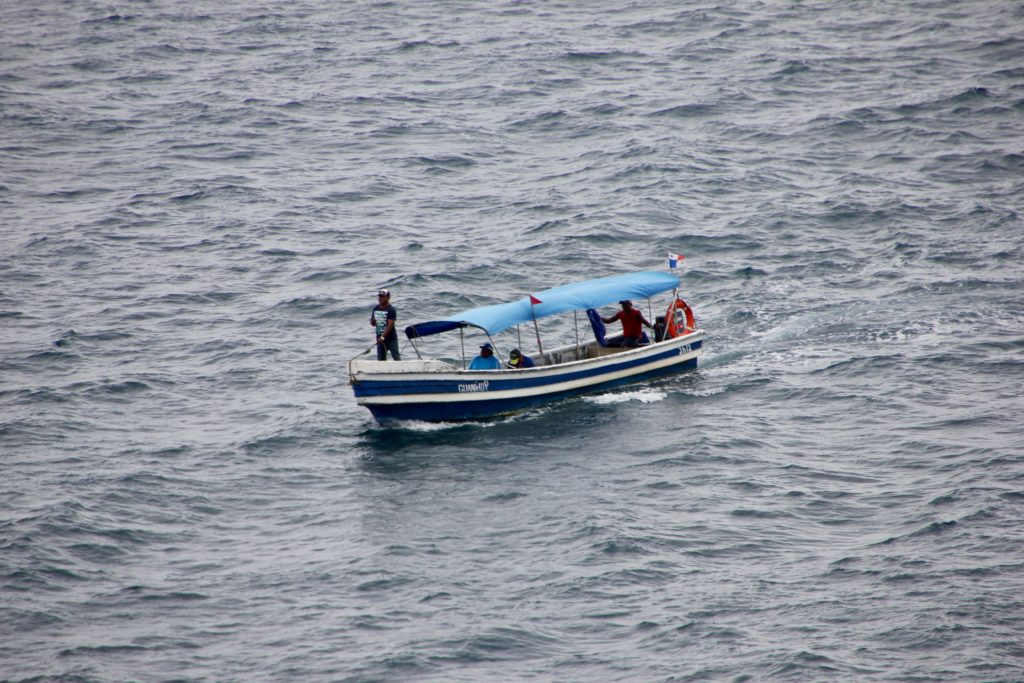
This is a seriously nice (for the Kuna) boat used locally as a water taxi. 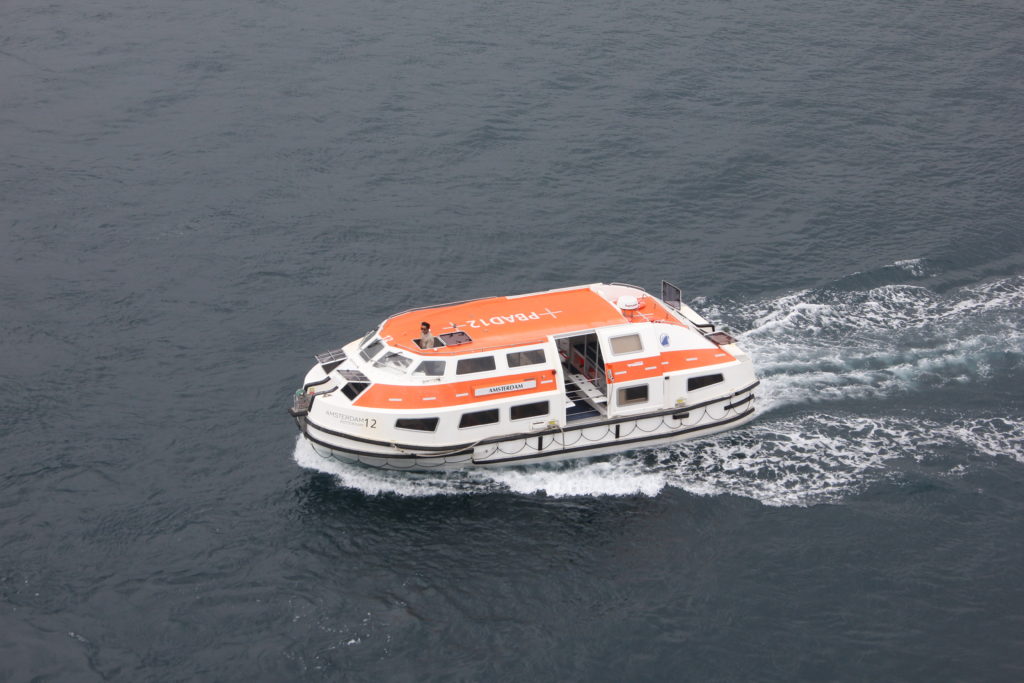
One of the tenders getting ready to take us ashore.
After a 15 minute tender ride we were on the island where we were allowed to come ashore. The Kuna people are very strict about who is allowed to come to what island(s) and when. The particular island that we were allowed to see was not at all large and seem to be, mostly, like an open air market.

In my visit, which lasted just a little over an hour, I walked down every street on the island, even mistakenly going down a path that I thought was a narrow street but was actually somebody’s private path. I saw the entire island from end to end, three times! Such a small place yet so many people living here. It certainly struck me as a very crowded place to live and work.
Although the Kuna people do speak Spanish, I was surprised at the responses I got when I tried to interact with them. The women are reluctant to say anything. The men would speak with me but only briefly and very tersely. My opinion was that these people, who have fiercely defended their culture and their lifestyle for hundreds of years, were not particularly happy with all of these strange looking (to them) visitors from the outside.
It was almost impossible for me to get any of the Kuna people that I spoke with to laugh. It really seemed as though they were there to conduct business and interact with us, their visitors, only to the degree that it was possible to make a buck.
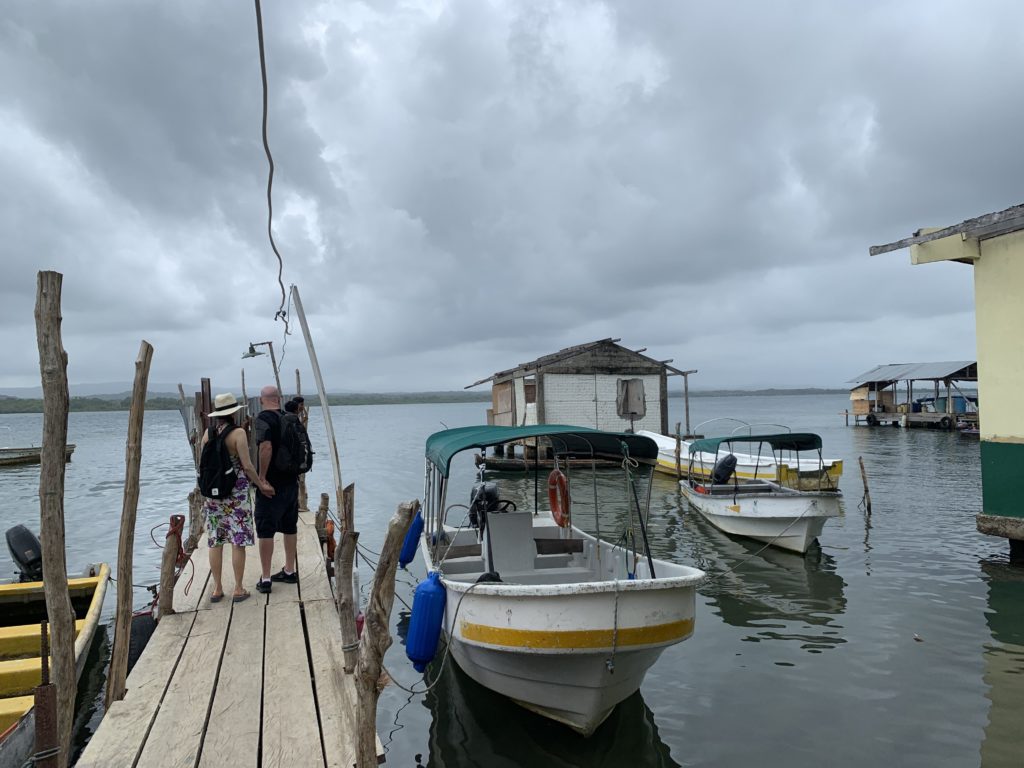
The public dock for the island 
A Kuna woman, dressed in traditional garb, sells molas.
One of the world famous handicrafts that these indigenous people make are molas. I’ve know about these little pieces of art for decades and have always been fascinated by them. It was amazing to me to walk among the largest selection of molas I’ve ever seen in one place. After visiting a hundred (maybe?) different displays, I finally found one that speaks to me. When I return home, I’ll frame this one and mount it on my wall so that I’ll always remember this amazing island and the peculiar people who call it home.
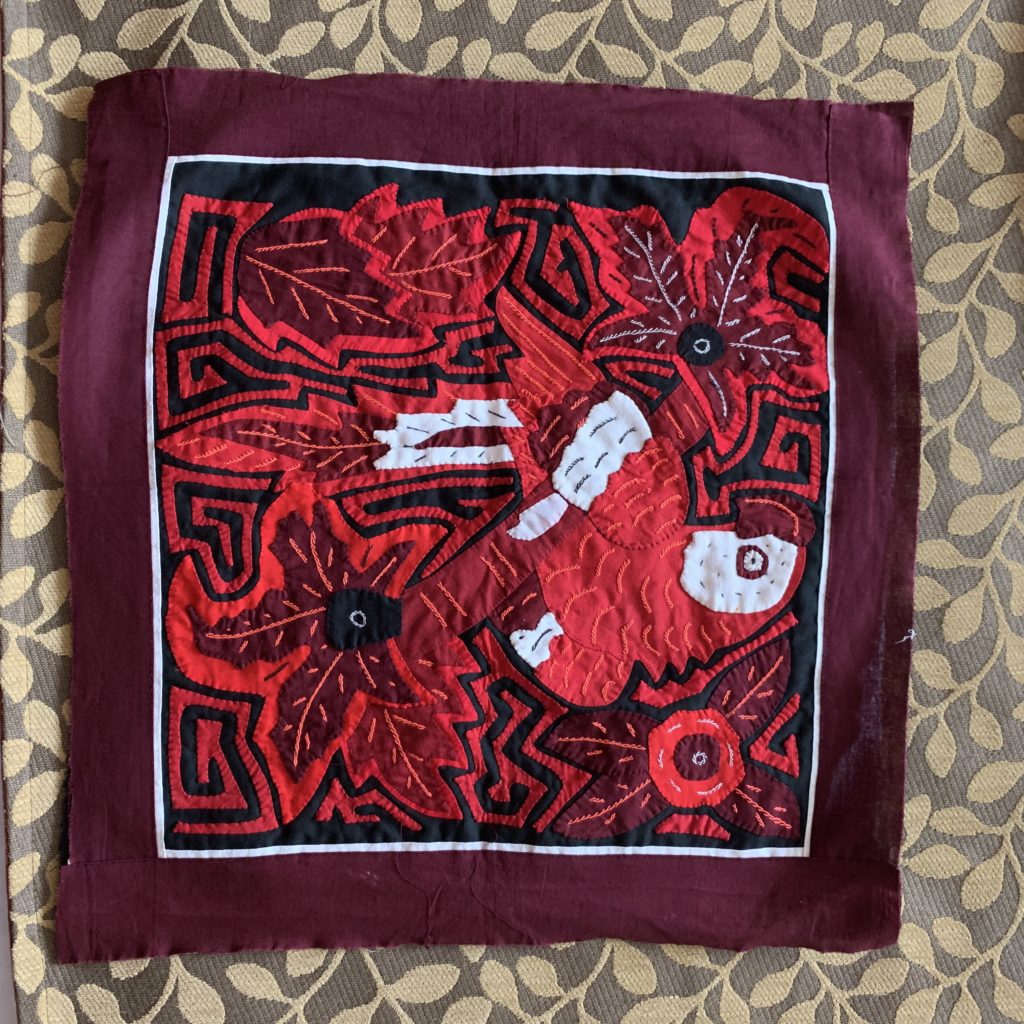
Having survived the tender ride back to the ship, I headed to the “Crow’s Nest” lounge to refresh myself. There, in the menu, was a cocktail that sounded so good I just couldn’t refuse it. It’s a pomegranate ginger martini with a sugared rim. Deeeee-lish!
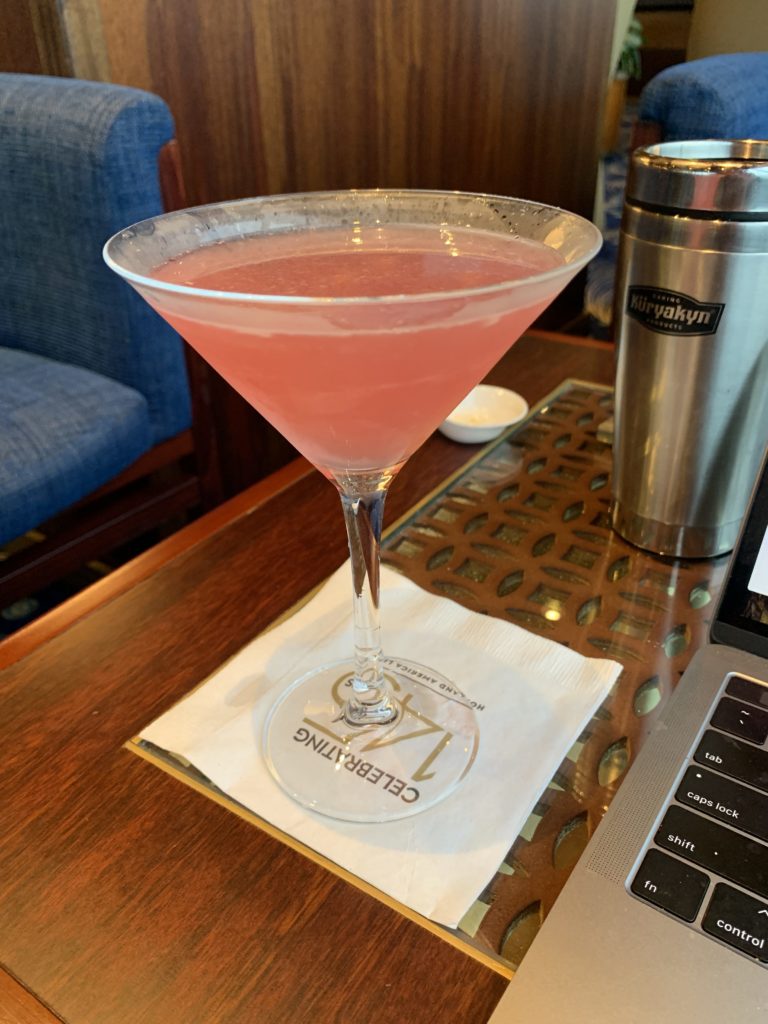
Just for reference, here’s a map that shows our exact location as we sail away from the San Blas islands. Consequently, it also shows you exactly where the San Blas archipelago is in the world. We’re just 90 miles away from the Panamá Canal, which is where I’ll be tomorrow! G’night!
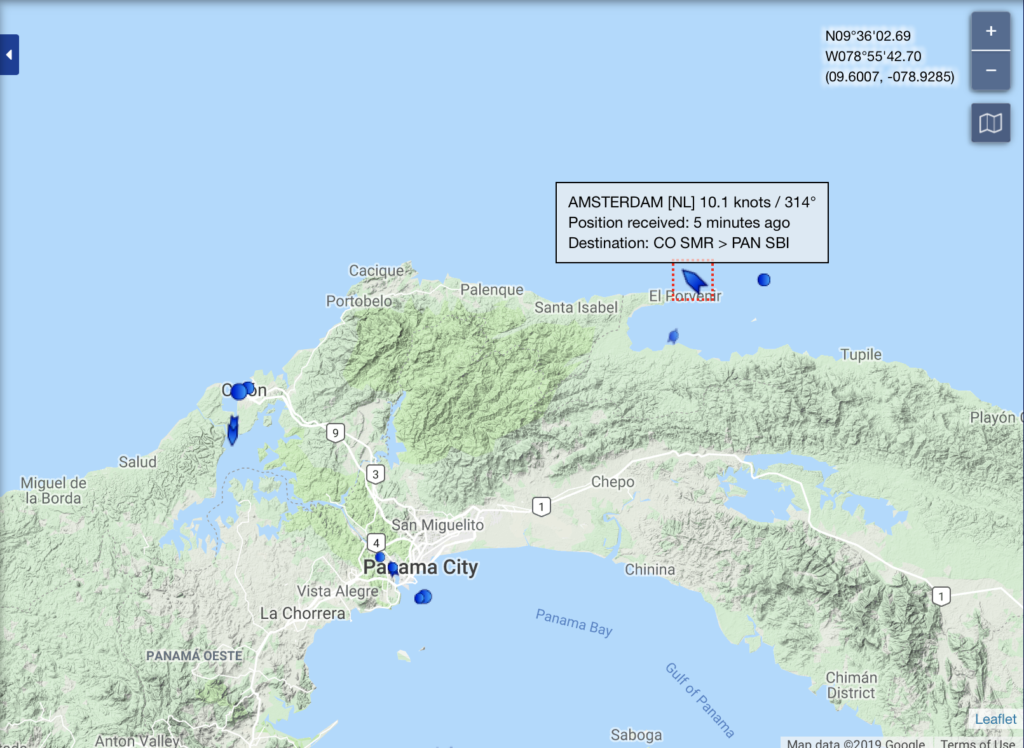
And Finally…
Every night when I return to my room I find some kind of an animal made from a towel. The towel animals seem to be different each night and this is the animal I found on my bed as I returned to my cabin. Let’s have a little fun. Please send me your idea about what this animal is supposed to be. You can post in the comments section on this page, or just send me a message. Ok. Ready? What is it?
